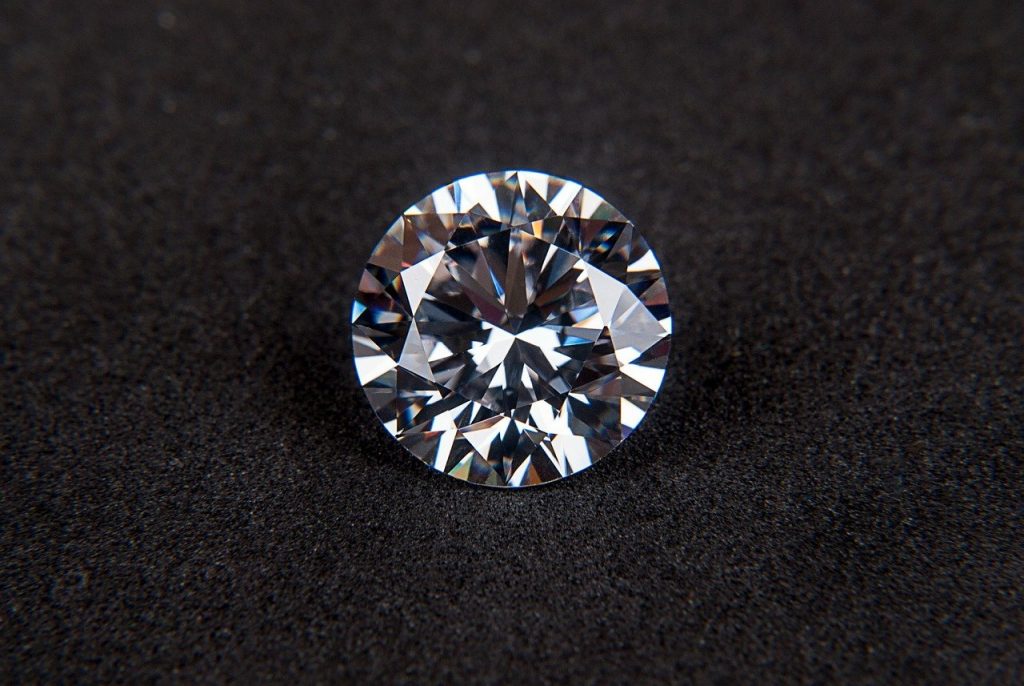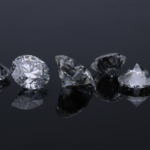Diamonds are known for their sparkle. In fact, so precious is the sparkle and reflectivity of a diamond that all other aspects that might make a precious stone so desirable are eschewed in favor of factors that enhance the diamond’s sparkle. Let us take a look at these. As often with diamonds, the Four Cs come into play, but when it comes to sparkle, the fourth C – carat – does not really affect the matter. Except for a bigger diamond seeming even bigger thanks to that brilliant sparkle! Let us take a look at why diamonds sparkle.
Carbon
Diamonds are made from pure carbon and it is a mere trick of physics and chemistry that carbon atoms arranged in just such a formation produce such a glorious sparkle. The gleam of a diamond is not meant for human eyes, it seems. Diamonds are formed deep inside the earth and only find their way to the surface by traveling up inside volcanic tubes of kimberlite clay.This clay is incredibly hard while it is under the ground, but crumbles fairly readily once exposed to air and sunshine, releasing its precious burden of dull grayish pebbles! Rough diamonds do not look like much at all, and some will never live up to their promise. Others, once subjected to the cutter’s blade, will more than delight the eyes — check out these for some beautiful eye candy: www.whiteflash.com/loose-diamonds/search/!
Cut
The cutter will clean and carefully examine the diamond before touching it with any instrument. He or she will find the internal planes of the stone, and will work to visualize the finished shape and sparkle, all before even thinking about picking up a tool! Today, much of the process is automated, which helps with the sparkle. Cuts are scientifically and very precisely formulated to maximize the flood of light into the stone through every point and facet, channeling and bouncing it around inside the stone before allowing it to reflect, refract and shine out through the table. A good cut can enhance the value of a stone tremendously, just as a poor one can massively devalue what might have otherwise been a decent stone — fortunately, the automation of the cutting process means that human error is much less of a factor than it used to be!
Clarity
But the cut is dependent on the clarity of the stone. Clarity is the internal purity of the stone — and this is often never complete. Almost all natural stones contain some kind of impurities which must be minimized or removed during the cutting process. In the event of a nearly perfectly clear stone being found, the cut can be generous, increasing the size and the sparkle, and thus increasing – by an order of magnitude, sometimes — the retail price that can be asked of the stone! The clearer or purer the stone’s interior, the better light will be able to flow freely inside, bouncing off the facets and being directed to the table, and thus increasing the sparkle, scintillation and brilliance of the finished product.
Color and Carat
While the best diamonds have no hint of color at all, some will have faint hints of color, while still others are brightly or vividly colored. Colored stones still sparkle, but the color does affect the brilliance of the shine, and also disrupts the rainbow brilliance that makes a good diamond look almost magical. The size, as mentioned above, is only relevant to the sparkle in the way that it affects the cut the stone is subject to, and as far as a big stone allows for even more brilliance and reflection!
The short answer to what makes a diamond shine? Its make-up, the cut, and a bit of light!










